
Nison Temple, Kyoto: Origins 1 of 2
Shozo FujiiStand in front of the nine dragon-headed statue of Benzaiten inside Kyoto's Nison-in Temple and you will feel a sense of awe.

Nison-in is a Tendai Buddhist temple complex in Ukyō-ku, a western ward in the city of Kyoto, Japan. The temple's official name is Ogura-yama Nison-kyō-in Keidai-ji. The temple is a popular destination during the Japanese maple viewing season. [Wikipedia]

Stand in front of the nine dragon-headed statue of Benzaiten inside Kyoto's Nison-in Temple and you will feel a sense of awe.

The nine dragon-headed water god Kuzuryu and lucky god Benzaiten seemed to have fused together. According to Japanese history, there is a large river which it continues to swim across for generations. Put your hands together to pray in front of the statue representing the deity and you will feel the grace of the heavens shine upon you.
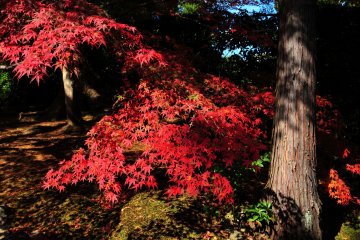
I admired and appreciated the brilliant autumn leaves at the famous temple approach of Nison-in, 'Momiji-no Baba (Riding Grounds with Maple Leaves)'.
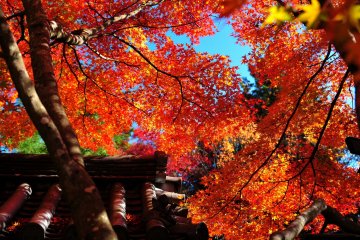
Enjoy the luxury of relaxing in the garden of Nison-in Temple, Kyoto. Sit on the wooden floor of Misono-tei Tea House admiring the beautiful garden.

The two statues of the principal images of Nison-in Temple in Kyoto are as wonderful as famous maple leaves in autumn here.
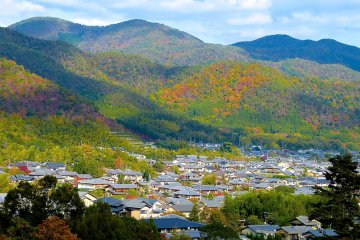
Nison-in Temple in Arashiyama (northwest Kyoto) is a fantastic place to enjoy autumn leaves. The view from the top of the hill behind the temple is a secret spot, and especially nice. Most of the people stay at the long approach and at the main temple buildings to snap photos of the autumn leaves. But if you are a good walker, don’t stop there. Please walk up the steps through the cemetery area and climb up the hill. You’ll overlook a stunning view of the gorgeous colored mountains below.

Established long ago, in 834, Nison-in was destroyed during the Onin War (1467-1477) and then rebuilt. Many people flock here during the autumn months to enjoy the colorful maples. If you've got strong legs and like old cemeteries, then a hike up the hill is a must. The more you look around, the more you will find in its ancient burial grounds. I visited in late November, and although the place was packed due to the foliage, after climbing the long steep stairs behind and to the right of the temple buildings, I was quite alone. It was quiet and beautiful.
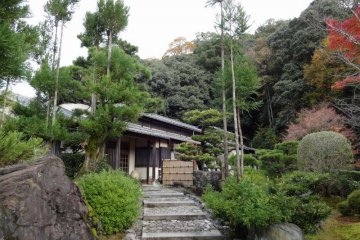
A hidden gem, Ryokan Yamazaki is worth the 30 minute bus ride from central Kyoto. Tranquil surroundings, hearty food and family treatment will start & end your day right.

Close to Nijo Castle in Japan's most historic city, this stylish, modern hotel is comfortable, well located and supremely affordable.
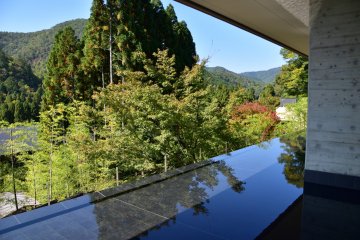
Tokyu Harvest Club Kyoto Takagamine & Viala is a gorgeous hotel inside the historical Shozan Resort Kyoto.

This new restaurant is easily accessible by foot from Arashiyama Bamboo Forest, Arashiyama Station, and Saga-Arashiyama Station, making it an ideal spot to try authentic Japanese gyukatsu. Elevate your already unforgettable trip with an equally memorable meal.
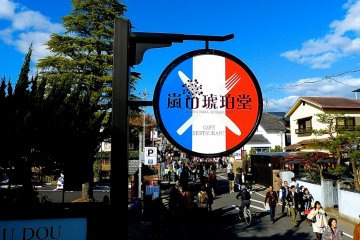
Kohaku-do is a casual French restaurant in Kyoto, Arashiyama. It is situated just a few minutes from Tenryu-ji Temple. And other train stations such as JR Saga-Arashiyama, Arashiyama Station on the Keifuku Dentetsu Line and Hankyu Line are all within a few minutes walk. The price range for the lunch sets is 2000-3000 yen, including hors d’oeuvre, soup, bread, a main dish, desert and a drink-bar. We ordered grilled whitefish and a hamburg steak. Both of the main dishes were quite good!
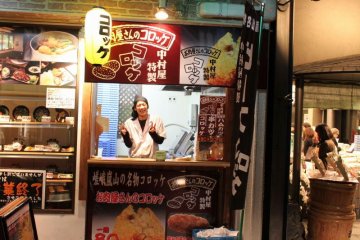
Foods Choices in Arashiyama. Serene eating encounters with eel or energy of the masses
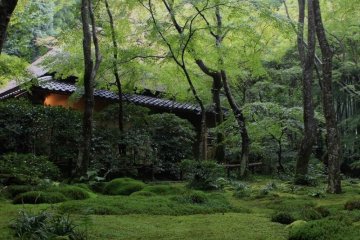
Gioji Temple (祇王寺) is a secluded Buddhist temple known for its picturesque moss garden.

Ōkōchi Sansō is the former home and garden of the Japanese jidaigeki actor Denjirō Ōkōchi in Arashiyama, Kyoto. The villa is open to the public for an admission fee and is known for its gardens and views of the Kyoto area. Several of the buildings are recorded as cultural properties by the national government. [Wikipedia]

The Arashiyama Bamboo Forest is one of the most popular attractions in Kyoto and is made up of numerous trails for visitors to enjoy. For the best photos, make sure to get here early in the morning as it gets crowded very quickly. It's not just the beauty of the bamboo that attracts people. The Arashiyama bamboo forest is one of the 100 most beautiful soundscapes in Japan, which are designated by the Japanese Ministry of the Environment. The sound of the rustling bamboo swaying in the wind is almost meditative. If you walk along the main street of Arashiyama, you will also pass Tenryuji Temple, one of the most beautiful Zen temples in Kyoto. According to Japanese tradition, bamboo is a symbol of strength. Therefore, it often happens that a Buddhist temple or Shinto shrine has a small bamboo grove on its premises to ward off evil.